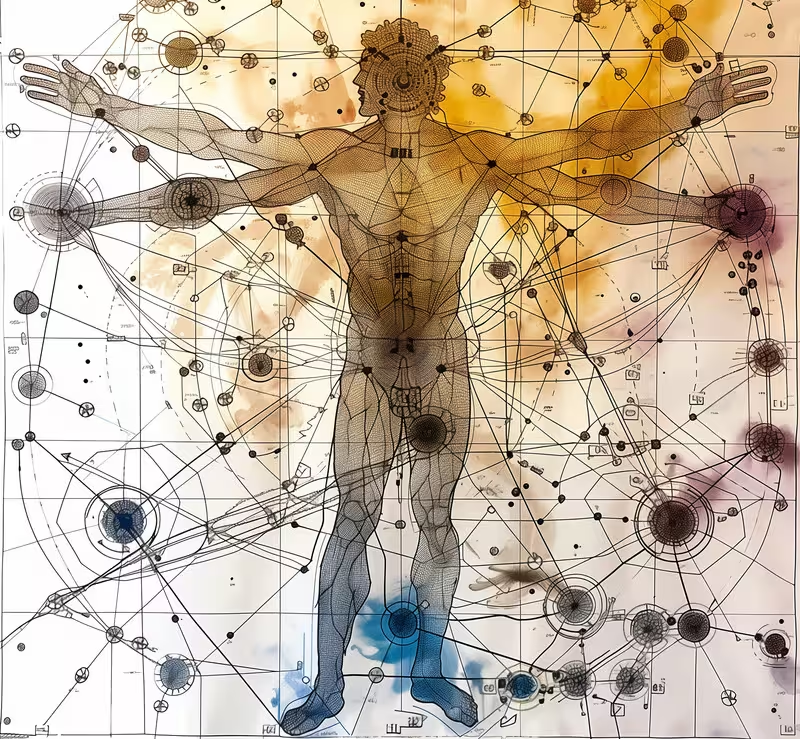Researchers have created an interactive molecular map of the human body, called COmics, based on extensive multiomics data. The tool allows researchers to explore molecular processes and traits associated with diseases such as diabetes, creating significant potential for future discoveries.
Researchers at Weill Cornell Medicine (WCM-Q) in Qatar have developed a detailed molecular map of the human body and its complex physiological processes by analyzing thousands of molecules from blood, urine and saliva samples collected from 391 volunteers.
The data was integrated to create a powerful interactive visual web tool called Connecting Omics (COmics), which can be used to explore the complex molecular makeup of humans and identify underlying traits associated with various diseases.
Molecular processes in the human body refer to the chemical reactions and interactions that occur within cells and between different cells, including important functions such as DNA replication, protein synthesis, energy production, cellular communication and various metabolic pathways controlled by protein-protein complex. protein-DNA and protein-RNA interactions that ultimately provide the vital functions of the body.
Study details and background
A comprehensive study published on August 19 Nature Communication They compiled 12 years of data from the Qatar Metabolomics Diabetes Study (QMDiab), a case-control study of diabetes in a multi-ethnic population in Qatar, predominantly of Arab, Filipino and Indian descent.
“Our idea was to bring together everything we’ve learned over more than a decade of multiomics research to create a comprehensive molecular model of the human body and its processes,” said senior author Dr. Carsten Suhre, professor of physiology and biophysics and member of the British Institute for Precision Medicine. “This reference tool is free to access and use for researchers who want to explore how the human body works at the molecular level and to generate hypotheses for experimental testing.”
Data collection and analysis
In collaboration with Hamad Medical Corporation, the researchers collected several aliquots of blood, urine, and saliva from both diabetic and non-diabetic volunteers. The samples were then characterized on 18 different high-throughput analytical platforms, providing an extremely rich dataset containing 6,300 individual molecular data points, including genomic data (DNA), transcriptome (RNA), proteins and amino acids, sugars, metabolites, and lipids. They also identified genetic variants, DNA methylation sites, and gene expression information for each of the participants.
This allowed the researchers to identify relationships and pathways linking genetic traits to specific proteins, metabolic processes, and diseases. They then meticulously integrated the mass of data from all individuals into an online web tool that interfaces with “Molecular Human,” a molecular description of the human body.
Multiohmic approach and its importance
The approach of combining genomics, transcriptomics, metabolomics, proteomics, and other so-called “-omics” forms of research is known as “multiomics.” In recent years, this approach has emerged as an important strategy for biomedical researchers trying to understand how the human body and diseases actually work, potentially providing insights that could lead to the development of new drug treatments.
For example, research is identifying and characterizing proteins and metabolites that are hallmarks of type 2 diabetes subtypes, shedding light on the different manifestations of the disease.
“Our integrative omics approach provides an overview of the relationships between different molecular traits and their relationship to human phenotype (observable traits such as appearance, biochemical processes, and behavior),” said first author Dr. Anna Halama, a research associate professor in the field of physiology and biophysics. “The scale of the data integrated into the COmics web tool provides researchers with access to hundreds of thousands of pathways and associations, providing tremendous potential for discovery and exploration.













